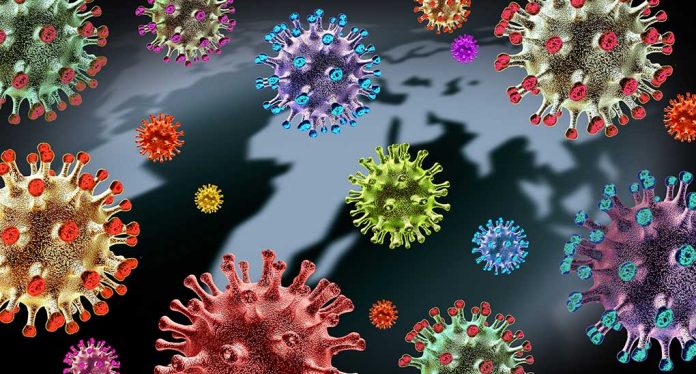
Amid a significant surge in norovirus cases this winter, learning how to prevent and manage this “winter vomiting bug” is crucial.
At a Glance
- Norovirus spreads primarily through contaminated surfaces, food, water, and close contact.
- The virus is responsible for 19-21 million illnesses in the U.S. annually.
- Symptoms include sudden vomiting, diarrhea, nausea, and abdominal cramps.
- Prevention relies on strict hygiene and careful food handling.
Understanding Norovirus
Norovirus is a highly contagious virus causing viral gastroenteritis, often called the “stomach flu.” Affecting millions globally each year, it’s most prevalent between November and April, dubbed “norovirus season.” The virus is a leading cause of gastroenteritis and accounts for about 18% of cases worldwide, leading to 200,000 deaths annually. In the United States, it causes 19-21 million illnesses every year, making it the leading cause of foodborne disease outbreaks.
https://www.youtube.com/watch?v=9k5ka25f8Og
Norovirus spreads remarkably quickly, especially in confined spaces like cruise ships. Its transmission occurs through contaminated surfaces, food, water, and close contact. Foods prone to contamination include raw shellfish like oysters and ready-to-eat cold dishes. The symptoms appear 12 to 24 hours post-exposure, manifesting as vomiting, diarrhea, abdominal cramps, and nausea.
Managing Symptoms and Treatment
Norovirus symptoms, while unpleasant, generally resolve within a few days without needing explicit medical treatment. Since no specific medication exists for norovirus, the recovery largely depends on the individual immune system’s resilience. Essential management strategies focus on hydration and symptom control, particularly to prevent dehydration. Oral rehydration solutions or intravenous fluids may become necessary depending on the severity of symptoms.
Healthcare providers might recommend over-the-counter anti-diarrheal and anti-nausea medications to alleviate symptoms. Diagnosis is typically based on symptoms, with RT-qPCR as the most reliable laboratory test. For those impacted, avoiding contact with others, practicing good hygiene, and refraining from food preparation are crucial.
Preventing Norovirus
Prevention is key, focusing on rigorous personal hygiene, avoiding high-risk foods, and ensuring safe water consumption. Isolation of infected individuals is particularly recommended on cruise ships and in institutions to curb the virus spread. Handwashing with soap and water is necessary, as alcohol-based sanitizers prove ineffective against norovirus. Effective cleaning methods involve bleach-containing products to sanitize contaminated surfaces.
“Eating raw seafood always is a risk for enteric [intestine-related] infections such as norovirus, but compared to the total number of food borne outbreaks, oyster-related outbreaks make up a small proportion,” said a senior scientist at the US Centers for Disease Control and Prevention.
As researchers continue vaccine development for norovirus, vigilance in preventive measures remains critical in controlling its surge. Regular communication with healthcare providers about symptoms and maintaining detailed records of medical history can facilitate effective consultations should the need arise.





